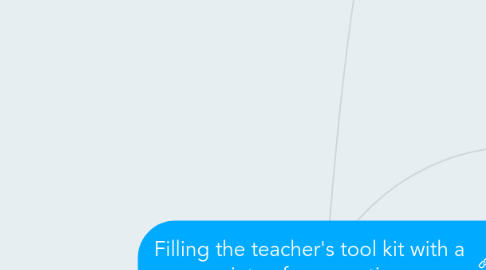
1. Philosophy Perspective
1.1. Barbara Coloroso's idea focuses on classroom management being student-lead with activities and problem solving. (University of Alberta lecture, January 30th, 2014)
1.1.1. Similar to the new initiative of Inspiring Education as presented by guest speaker Brent McDonough. (University of Alberta seminar, April 3rd, 2014)
1.2. Canter & Canter's idea of a classroom management as teacher-lead. (University of Alberta lecture, January 30th, 2014)
1.2.1. More in line with the old way of strong content-based education.
1.3. I adhere to the assertion pertaining to Aboriginal education that "the foundation for Aboriginal teachings on learning is built on a notion of a life as learning and learning as lifelong." (Anuik, Battiste & George, 2010, p. 67)
1.3.1. Critical thinking is important. But this must be clarified. What is critical thinking, anyway? To me, this is achieved by questioning truth-claims.
2. Historical Perspective
2.1. "King" Ralph Klein as he is referred to, introduced Neo-Liberal policies as a revamping of the curriculum as discussed by Kachur & Harrison (1999)
2.1.1. Mentioning of how the policies have steered the province in the wrong direction due to an attack on equality of opportunity.
2.2. The alternative to socialism as an option was headed by Nova Scotia's very own St. Francis Xavier University in 1928-29 (Barakett & Cleghorn, 2009, pp. 42-43)
2.2.1. This touches on the subject, for me, of whether or not consumerism ought to be present in the classroom or gymnasium. For a public school, generally speaking, I don't believe it should.
2.3. The impact that Eugenics had on Albertan education.
2.3.1. As indicated by Rob Wilson's talk both in lecture hall and in class. (University of Alberta lecture, March 6th, 2014)
2.3.1.1. He talked about the archival work that is being done to chronicle the old interpretations of intelligence, and how sterilization was performed, along with the Eugenics department at the University of Alberta until recently. (University of Alberta presentation, March 6th, 2014)
3. Sociological Perspective
3.1. Moral socialization: Emile Durkheim's comment that schools pass on, as moral agents, "an idealized version of society's values." (Barakett & Cleghorn, 2009, p. 130)
3.1.1. For religious education this is the over-arching objective. But for public education it is more of a challenge
3.2. Political socialization: Mifflen and Mifflen's idea "that the school plays in inculcating the values and norms that support the prevailing stucture of society, including the dominant political ideology. (Barakett & Cleghorn, 2009, p.130)
3.2.1. For social studies teachers, it is difficult to not propagandize to the students. Insofar as we give opinions, we give propaganda; therefore, balance is oh-so important along political lines intended for socialization.
3.3. The Hidden Curriculum: We take for granted - as white people - the residual effects that colonialism has had on Aboriginal people in Canada, among other minority groups. It is defined as the "behaviours, attitudes, and knowledge the school unintentionally teaches through its content sleection, routines, and social relationships, the hidden curriculum provides additional space for spreading dominant ideologies in schools and consequently promotes institutional racism." (Barakett & Cleghorn, 2009, pp. 165-166)
3.3.1. A topic I have been very interested in as of late. It touches on experiential learning, which I think is fantastic, and that I experienced twice at the recent Truth and Reconciliation events here in Edmonton. The crux of the matter for teachers is critical race theory (prejudice + power = racism). Foucault's theory, though quite reductionist, has a lot of explanatory power. This idea is highlighted under the guise of 'critical pedagogy'. (Barakett & Cleghorn, 2009, p. 171)
